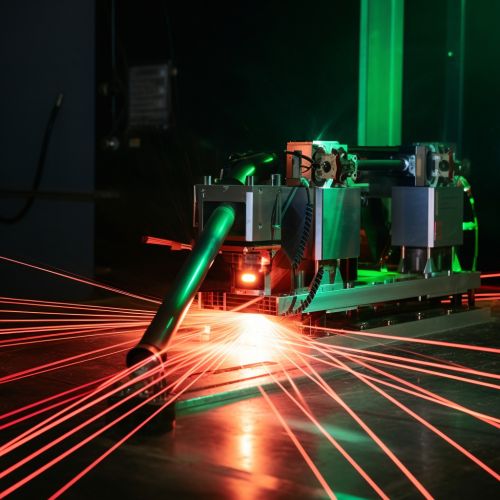The Physics of Quantum Optics in Laser Technology
Introduction
Quantum optics is a branch of physics that focuses on the behavior of light and its interactions with matter at the microscopic level, taking into account the principles of quantum mechanics. It is a field that has seen significant advancements in recent years, particularly in the realm of laser technology. This article delves into the physics of quantum optics in laser technology, providing a comprehensive and detailed understanding of the subject matter.


Quantum Optics: An Overview
Quantum optics studies the fundamental nature of light and its interaction with atoms and molecules. It is a field that combines the principles of quantum mechanics and optics, and is fundamental to our understanding of many aspects of modern physics, including quantum information, quantum communication, and quantum computing.
In quantum optics, light is treated as a collection of particles known as photons. These particles exhibit both wave-like and particle-like properties, a phenomenon known as wave-particle duality. This duality is one of the cornerstones of quantum mechanics and is fundamental to the understanding of quantum optics.
Quantum Optics in Laser Technology
Laser technology is one of the most significant applications of quantum optics. Lasers, or Light Amplification by Stimulated Emission of Radiation, are devices that produce a narrow and intense beam of coherent light. The principles of quantum optics are fundamental to the operation of lasers, as they explain how energy is absorbed and emitted by atoms, leading to the production of laser light.


Absorption and Emission of Light
The absorption and emission of light by atoms are key processes in the operation of lasers. When an atom absorbs a photon, it is excited to a higher energy state. This state is unstable, and the atom soon returns to its ground state, emitting a photon in the process. This process of absorption and emission is fundamental to the operation of lasers.
Stimulated Emission
The principle of stimulated emission is at the heart of laser technology. When an excited atom encounters a photon that matches the energy difference between its ground and excited states, it can be stimulated to emit a photon. This emitted photon is identical to the incoming photon, having the same phase, frequency, polarization, and direction of propagation. This process of stimulated emission is what leads to the amplification of light in a laser, resulting in a coherent and intense beam of light.


Quantum States and Laser Operation
In quantum optics, the state of a system is described by a wave function, which provides a complete description of the system's properties. In the context of lasers, the quantum states of the atoms within the laser medium are of particular interest. These states determine the absorption and emission properties of the atoms, and thus the operation of the laser.
Population Inversion
For a laser to operate, a population inversion must be achieved. This means that more atoms must be in the excited state than in the ground state. Achieving a population inversion is a key challenge in laser design, as it goes against the natural tendency of atoms to reside in their ground state. Various techniques, such as optical pumping and electrical discharge, are used to achieve a population inversion.


Quantum Optics and Laser Applications
The principles of quantum optics have enabled a wide range of applications for laser technology. These include, but are not limited to, telecommunications, medicine, manufacturing, and scientific research.
Telecommunications
In telecommunications, lasers are used in fiber-optic communication systems. The principles of quantum optics allow for the transmission of information over long distances with minimal loss of signal quality.
Medicine
In medicine, lasers are used in a variety of procedures, from eye surgery to tumor removal. The precision and control offered by laser technology, underpinned by the principles of quantum optics, make it an invaluable tool in many medical procedures.


Manufacturing
In manufacturing, lasers are used for cutting, welding, and marking a wide range of materials. The ability to focus laser light to a small spot and deliver a large amount of energy makes it ideal for these applications.
Scientific Research
In scientific research, lasers are used in a variety of ways, from the trapping and cooling of atoms to the study of ultrafast processes. The principles of quantum optics have also paved the way for the development of quantum computers, which promise to revolutionize computing.
Conclusion
Quantum optics plays a crucial role in our understanding of light and its interactions with matter. Its principles are fundamental to the operation of lasers, and have enabled a wide range of applications in various fields. As research in this field continues, we can expect to see even more exciting developments in the future.


